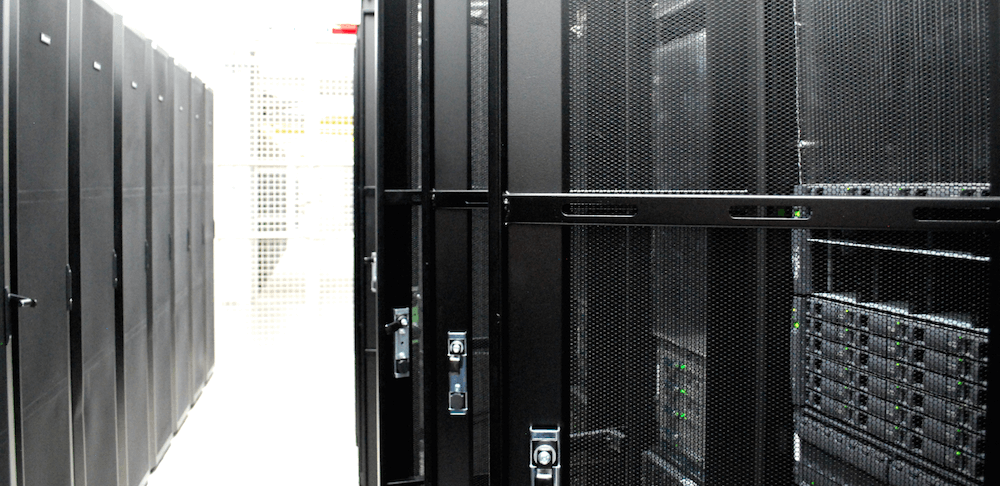Photo tour of the "cloud" of 1cloud

Today we would like to tell about the 1cloud equipment that “grumbles” in the Tier III data center racks in St. Petersburg (SDN) and in Moscow (Dataspace).
Let's begin our acquaintance with the Dell PowerEdge R810 servers on which the base pool of resources is organized. PowerEdge R810 is based on Intel processors and has 32 DIMM-slots, in which you can install up to 512 GB of RAM.
')

PowerEdge R810
The R810 server is great for solving virtualization problems - all these machines have hardware hypervisors vSphere ESXi, which divide servers into several virtual machines.
A distinctive feature of the PowerEdge R810 is their reliability, which is achieved through the use of built-in management functions and system diagnostics and internal SD modules that provide recovery after a failure at the hypervisor level.


Cisco UCS 5108 Chassis and Cisco UCS B200 M3
And this chassis, which are included in the complex Cisco UCS . They housed the blade servers UCS B200 M3 , having two processors of the Intel Xeon E5-2690 v2 family. This system is a high-performance pool of computing resources.
In general, Cisco launched its unified computing system UCS in 2009 and integrated the virtualization and automation support mechanisms into it. Cisco UCS is one of the best platforms for building cloud environments because it has a unified system for managing a set of hardware components, automatic recognition of added blades and open Cisco UCS APIs that allow you to do your own software development.


This is what Cisco UCS 5108 Chassis looks like from behind. In the second photo - the extracted blocks of the cooling system; to pull out the block, you need to squeeze the latch and pull the handle

Rail for mounting chassis in rack


Cisco UCS 6248UP Fabric Interconnect
Here you see the Cisco UCS 6248UP Fabric Interconnect , which is not yet connected. In our case, this is a model with 32 ports and the ability to add a 16-port module. The switch manages the Cisco UCS system, that is, it connects the chassis to the network switches.
The Fabric Interconnect architecture provides switching at speeds up to 10 Gbps, without packet loss and with extremely low latency — each switch port is universal and supports Ethernet and FC technologies. Moreover, the device can simultaneously process network streams on LAN and SAN networks.

These are already connected Cisco UCS and Cisco UCS 6248UP Fabric Interconnect

NetApp DS2246
The photo above shows the NetApp storage expansion shelves. In fact, this is a set of disks combined into logical RAID groups. Specifically, the DS2246 uses two types of drives - SSD and SAS.
In this regard, we have “fast” storage, built on solid-state drives, and “normal” - built on SAS. There are also "slow" SATA-drives. They are installed in the shelves of the DS4246 and are mainly reserved for storing backups, however, if the client wishes, he will be able to connect them as additional disks for VDS. The number of available storage devices is divided in the following proportions: SAS - 70%, SSD - 22%, SATA - 8%.


FAS 8040
1cloud virtual servers are located on NetApp V6240 / FAS8040 disk arrays. The photo above shows the NetApp storage controller - FAS 8040. The FAS8000 series is equipped with Intel multiprocessor chipsets and uses high-performance memory and NVRAM, which speeds up write operations.
FAS8000 guarantee availability level not lower than 99.999%. Each controller has an integrated service processor, isolated from the logic of the main controller, which will retain its functionality even in case of failure of the remaining part of the board.
It is worth adding that we have other controllers of different levels and models, among them: FAS8040, V6240, FAS2554, FAS2552, FAS2240. Racks with controllers are formed in such a way that the storage arrays attached to them can be placed next to them.
PS Additional materials about our work:
- How we created a load tracking system for user servers
- How we did our DNS management system based on ANS product
- High performance and hosting infrastructure: Experience 1cloud
- About different types of disks on the same virtual machine
Source: https://habr.com/ru/post/278479/
All Articles